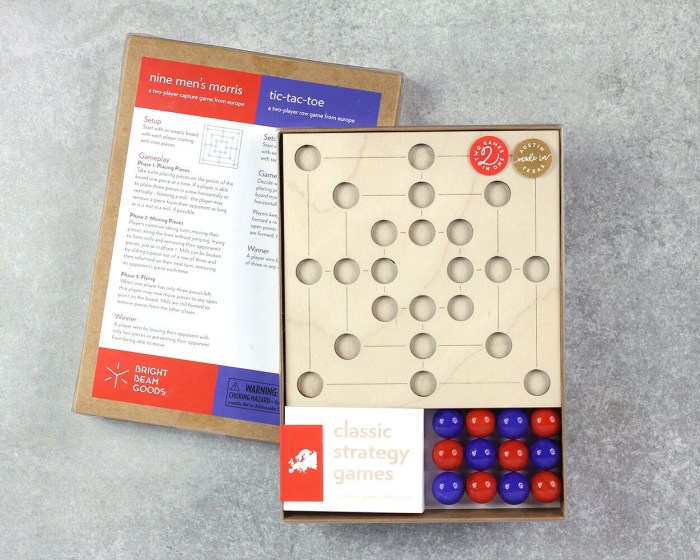
Two-player board games offer a unique blend of strategy, competition, and fun, making them an ideal choice for couples, friends, or family members looking to spend quality time together. These games not only challenge players’ tactical skills but also foster meaningful interactions, turning a simple game night into a memorable experience.
From classic titles that have stood the test of time to modern games that introduce innovative mechanics, two-player board games encompass a wide array of themes and styles. Whether you’re strategizing in a duel of wits or embarking on fantastical adventures, there’s a game out there that fits every pair’s preference.
Popular Two-Player Board Games

Two-player board games offer a unique blend of strategy and competition, making them an ideal choice for gamers seeking intense, interactive experiences. In recent years, several titles have risen to prominence for their engaging mechanics and rich themes. Here’s a look at five of the most popular two-player board games currently trending in the gaming community, complete with insights into their mechanics and strategies.
Top Five Trending Two-Player Board Games
Understanding the dynamics of the top games allows players to appreciate the intricacies of each experience. The following games have captivated players with their innovative designs and strategic depth.
- 7 Wonders Duel: This game is a head-to-head adaptation of the original 7 Wonders. Players draft cards to build their civilizations through military, scientific, and cultural achievements. Strategy revolves around resource management and anticipating your opponent’s moves. Winning can be achieved through military domination, scientific advancement, or accumulating the most points by the end of three ages.
- Patchwork: A delightful game centered on quilt-making, players compete to create the most aesthetically pleasing and high-scoring quilt by placing Tetris-like pieces on a board. Timely decisions about which pieces to select and placing them strategically is crucial. Players must balance time and resources, as well as the placement of their pieces to maximize space and minimize gaps.
- Hive: A strategic abstract game where players control insect-themed tiles, aiming to surround the opponent’s queen bee. Each insect has unique movement rules, adding depth to strategy. Anticipating your opponent’s moves while planning your own is key, as players must balance offensive and defensive strategies effectively.
- Watergate: Set during the Watergate scandal, this historical card-driven game pits a journalist against the Nixon administration. The journalist aims to gather evidence while the administration works to cover up the scandal. Deep strategy involves resource management and timing, as players must carefully choose when to play cards for maximum impact.
- Star Realms: A fast-paced deck-building game where players compete to build powerful ships and bases. Players draw cards to purchase new ships and engage in combat. The key to success is creating combos that can provide significant damage or resource generation, allowing for quick victories.
Comparison of Key Features
The following table summarizes the key features, themes, and play styles of the popular two-player games discussed, aiding players in choosing their next experience.
| Game | Theme | Mechanics | Victory Conditions |
|---|---|---|---|
| 7 Wonders Duel | Civilization Building | Card Drafting, Resource Management | Military Domination, Scientific Victory, Highest Points |
| Patchwork | Quilt Making | Tile Placement, Resource Management | Most Points from Quilt |
| Hive | Insect Strategy | Tile Movement, Surrounding | Surround Opponent’s Queen Bee |
| Watergate | Historical Event | Card-driven, Resource Management | Gather Evidence or Prevent it |
| Star Realms | Space Combat | Deck-building, Combat | Reduce Opponent’s Authority to Zero |
“A well-placed strategy in a two-player game can swing the balance of victory in unexpected ways.”
The Role of Card Games in Two-Player Interactions
Playing card games is a beloved pastime that offers a unique dynamic when it comes to two-player interactions. Unlike multiplayer formats that often involve more chaotic and unpredictable elements, two-player card games allow for deeper strategy, more focused engagement, and a chance to build a strong connection between the players. The intimacy of a two-player game creates an environment where each decision carries weight, leading to a more intense and personal gaming experience.The dynamics of two-player card games significantly differ from their multiplayer counterparts.
The absence of additional players means that strategies can be more direct and tailored specifically to the opponent’s actions. Each card played is a direct response to the other player’s moves, fostering a competitive yet intimate atmosphere. This setup nurtures a greater understanding of one another’s thought processes, enhancing the overall experience.
Classic and Modern Card Games for Two Players
There is a rich variety of card games suitable for two players, ranging from timeless classics to innovative modern creations. These games often emphasize strategic thinking and adaptability.
- Gin Rummy: A classic card game that requires players to form sets and runs while trying to outsmart their opponent. It promotes critical thinking and memorization of cards.
- War: A simple yet engaging game that relies on luck. Players draw cards, and the one with the higher card wins the round, making it a quick-paced showdown.
- Cribbage: Known for its unique scoring system and strategic depth, this game combines elements of luck and skill, allowing for intense competition.
- Lost Cities: A modern game where players embark on expeditions, weighing risks versus potential rewards. It encourages strategic planning and decision-making.
- Jaipur: A fast-paced trading game that pits players against each other as they compete to become the Maharaja’s personal trader. It emphasizes quick thinking and adaptability.
The psychological benefits of engaging in two-player card games are profound and varied. These games can strengthen relationships by fostering communication, enhancing emotional bonding, and encouraging teamwork. As players strategize and compete, they develop a better understanding of each other’s personalities and how they handle challenges.
“Two-player card games serve as a mirror reflecting the dynamics of relationships, revealing strengths and areas for growth in communication.”
Playing card games together can also serve as a form of stress relief, providing an enjoyable distraction from daily life. Engaging in friendly competition helps players to unwind and connect, leading to increased satisfaction in their interactions. Furthermore, the shared experience of victory or defeat cultivates empathy and resilience, essential elements for nurturing healthy relationships. Ultimately, the role of card games in two-player interactions goes beyond just entertainment; they facilitate personal growth and deepen connections, making them a valuable tool in fostering relationships.
Expanding Beyond Board Games

The realm of two-player experiences extends well beyond the traditional board game scene. From the energetic atmosphere of arcades to the engaging world of online gaming, there are myriad options for duos looking to bond over competition and cooperation. Exploring these avenues showcases the diverse nature of interactive entertainment available today.
Variety of Two-Player Experiences in Arcade and Coin-Op Games
Arcades offer a vibrant setting for two-player interactions, providing a unique appeal that blends nostalgia with excitement. These environments often feature a variety of games, including classic titles and contemporary releases. The immediate engagement of arcade games captivates players with their immersive graphics and quick-paced action.
- Competitive Racing Games: Titles like “Mario Kart Arcade GP” allow players to race against each other in a colorful, dynamic environment, encouraging friendly competition and strategic gameplay.
- Cooperative Beat-’em-Ups: Games like “Street Fighter” and “Teenage Mutant Ninja Turtles” invite players to team up against waves of enemies, fostering collaboration and shared victories.
- Interactive Sports Games: Sports simulators like “FIFA” and “NBA Jam” bring a realistic sports experience to players. With realistic controls and graphics, players can experience the thrill of competition together.
The social atmosphere of arcades enhances these experiences by allowing players to engage with each other and spectators, creating memorable moments built around shared excitement.
Engagement Levels of Two-Player Online Games versus Traditional Board Games
The shift towards digital gaming has transformed the way players interact with each other. Two-player online games have become increasingly popular, offering a blend of convenience and engagement that differs significantly from traditional board games. While board games typically encourage face-to-face interaction, online games provide a platform for players to connect regardless of geographical barriers. This allows for a wider range of experiences and a more extensive variety of games.
“Two-player online games offer immediate access to a global player pool, enhancing the engagement levels beyond what traditional games can provide.”
The immediacy of interaction in online gaming is contrasted with the tactile experience of board games, where the physical presence of opponents enhances the social dynamics. Players can enjoy the thrill of strategy and the unpredictability of chance in both formats, but they engage in distinct manners.
Roleplaying Games Designed for Two Players
Roleplaying games (RPGs) specifically designed for two players cater to those seeking a deeper narrative experience. These games often emphasize storytelling and creativity, allowing players to collaboratively build a world and navigate through it together.The mechanics of two-player RPGs encourage teamwork and dialogue, which enhances player connection. Popular examples include “Fog of Love” and “The Warren,” where the narrative unfolds based on the choices made by players, resulting in unique story arcs.
- Fog of Love: A romantic comedy RPG where players create characters and navigate relationship scenarios, allowing for exploration of dynamics and emotions in a fun and engaging way.
- The Warren: A storytelling game that puts players in the shoes of rabbits trying to survive in a world filled with predators, emphasizing cooperation and strategic decision-making.
In these games, the focus on character development and narrative progression fosters a rich storytelling experience that is both engaging and creatively fulfilling. They emphasize the collaborative aspect of gaming, making them perfect for pairs looking to delve into an immersive narrative together.
Final Review
In summary, two-player board games not only provide entertainment but also serve as an excellent means of enhancing relationships through shared experiences and friendly competition. As you explore the diverse options available, you’ll find that these games can bring not just fun, but also a deeper connection with your gaming partner.
Essential FAQs
What are some popular two-player board games?
Popular two-player board games include titles like Jaipur, Lost Cities, and Hive, known for their strategic depth and engaging gameplay.
How do two-player board games differ from multiplayer games?
Two-player games often focus on direct competition or collaboration, leading to more intense interactions compared to multiplayer formats that may dilute the dynamics.
Are there any benefits to playing two-player card games?
Yes, two-player card games can enhance communication skills, promote bonding, and provide emotional benefits through shared victories and defeats.
Can you play board games online with a partner?
Absolutely! Many board games offer online versions that allow two players to connect and play from different locations.
What makes two-player roleplaying games unique?
Two-player roleplaying games often emphasize storytelling and character development, allowing for a more personalized and immersive experience.





